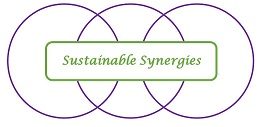Plastic is a recent material (industrial production started at the beginning of the 20th century) that is relatively cheap and combines a set of valuable properties (lightness, strength, durability). These can be further extended with different additives. Since 1950, annual global plastic production has increased from 2 to 380 million tons and is projected to double by 2035 and almost quadruple by 2050. As a matter of fact, modern life is unthinkable without it. The chart below presents the global plastic use by polymer and sector (source: OECD policy paper Improving Plastics Management: Trends, policy responses, and the role of international co-operation and trade).

However, plastics’ degradation is very slow under natural conditions. Today only 71 per cent of plastic produced is formally collected, and less than 15 per cent is actually recycled. Consequently plastic is accumulating in the environment and causes significant impacts (urban amenity, landfilling, loss of (marine) biodiversity, GHG emissions, contamination of the food chain, microplastics, etc. ). This situation is also an economic non-sense because billions of dollars of economic value are “thrown away” after a single, short use.
Plastic recycling has proven to be a challenging issue for several reasons:
- Plastic is not as easy to recycle as glass and metals because it has a polymeric structure. Only chemical recycling can recover the original components, but it is a quite young technology that still needs to be demonstrated at large scale (see Chemical Recycling Europe).
- To promote either mechanical or chemical recycling, plastic waste must be separated from municipal solid wastes and aggregated into economically viable quantities. This requires significant investment and organizational reform to set up municipal waste collection and sorting systems. Landfilling or incineration (i.e. waste to energy) are generally much cheaper and easier.
- Manufacturers of recycled plastics compete with traditional (virgin) plastics producers. Apart some exception (PET, HDPE), recycled plastic production is not economically competitive. Many manufacturers continue to rely on solely virgin inputs not only because of lower price (even if volatile in line with oil) but also because of inertia and uncertainty in supply.
- Some plastics in the waste streams are built into more complex end-of-life products that are difficult and costly to disassemble. In general design and packaging choice do not account for local infrastructure.
- Biobased plastics are an interesting option. Currently it represents a small share of the market while the environmental benefits can be questioned.
Despite the fact that EU waste legislation states that recovery operations on exported waste must be carried out under broadly equivalent conditions to those within the EU, plastic wastes originating from Europe were mostly recycled in Asia until 2018 when China decided to put strong restrictions on the importation of waste. The plastic recycling chain across the world got severely disrupted. This has revealed the basic co-ordination failure lying at the heart of this issue. Potential suppliers of recycled plastics (i.e. waste operators) do not invest sufficiently in sorting and recycling capacity because the profitability of these operations is limited. Potential buyers (i.e. manufacturing firms) have limited incentives to use recycled plastics as inputs because of uncertainty about their availability and quality.
In response to this situation, the EU presented a vision for Europe’s new plastics economy (see COM (2018) 28) that is articulated according to 2 pillars:
- A smart, innovative and sustainable plastics industry, where design and production fully respect the needs of reuse, repair, and recycling, bring growth and jobs to Europe and help cut EU’s greenhouse gas emissions and dependence on imported fossil fuels.
- In Europe, citizens, government and industry support more sustainable and safer consumption and production patterns for plastics. This provides a fertile ground for social innovation and entrepreneurship, creating a wealth of opportunities for all Europeans.
It remains nevertheless that plastics value chains are developed across entire continents and plastic waste is traded internationally. Considering that it is a global issue, a proposal for an UN treaty on plastic pollution was tabled by WWF, The Ellen MacArthur Foundation, and the Boston Group (see document and the press release of Plastic Europe). Critical elements of the treaty should include:
- Harmonized regulatory standards and common definitions across markets
- Clear national targets and action plans that aggregate to deliver on the treaty’s overarching objective
- Common reporting metrics and methodologies across the plastic value chain
- Coordinated investment approaches to support infrastructure development in key markets and innovation
In any case, thinking and improving the functioning of such a complex value chain requires efforts and greater cooperation by all its key players. Treaty will not be enough. Policy alignment is critical on both the supply and demand sides of recycled plastic markets. New delivery models, substitute materials and waste collection and sorting infrastructure must be deployed. There is a systemic link between all these components as illustrated by the scenario below that summarizes the solutions to be implemented to control plastic leakage (source: Breaking the Plastic Wave: A Comprehensive Assessment of Pathways Towards Stopping Ocean Plastic Pollution).

